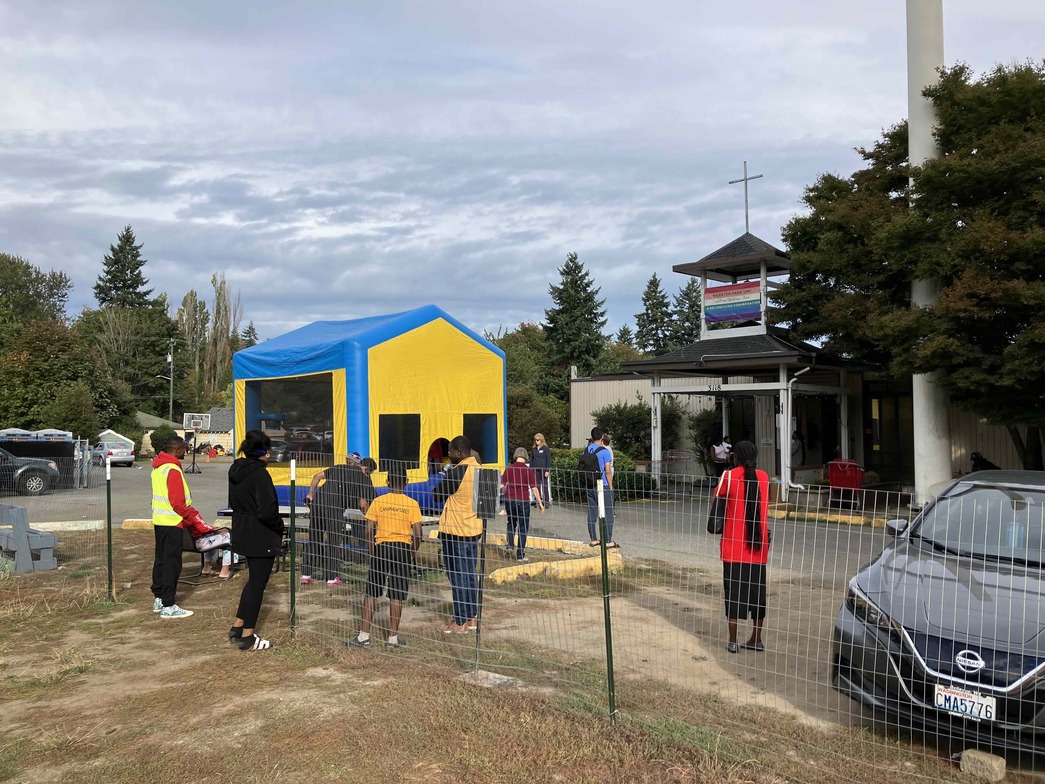Day of Service and Learning


This past weekend, nine volunteers from our congregation brought lunch, a bounce house, badminton, soccer, bubbles, music, and fun to a local church where refugees and asylum seekers find accommodation for the Day of Service and Learning 2.0. The day was conceived of with two functions, both service and learning. The service part is pretty clear, since the event is organized by our Service Team and serves immigrants, refugees, and asylum seekers. The learning part is our way of coming with humility, ready to listen and be changed by the encounter with people whose life’s journey is different from our own. The 2.0 indicates that this is our second year of planning and organizing the event and our intention was to improve on it in some important ways. We were able to receive a Mustard Seed Grant to help pay for some of the improvements. Instead of listing my top 10 learnings like I did last year, our learnings now go deeper so I’ll describe only two, but in more detail.
First, we invited refugees and asylum seekers from two local churches to attend together at one location. When we chose the date, both communities were interested in participating, but over the months of planning, we heard less and less from the folks at where the event wasn't being held. One of our big learnings was that a simple invitation was not enough for those living beyond the host church to feel welcomed, safe, and ready to attend. We will need to discern our next steps and how relationship might be built with the larger community if there are other ways we might be able to come alongside people whose needs may be different.
Second, at the local pastor's suggestion, and due to a very generous donation from a member of our congregation, we were able to rent a bounce house for the event. It was a huge hit. The children loved being in it and playing together. Our learnings come from trying to manage the children and adults who wanted to bounce safely in a bounce house which holds a maximum of 12 at a time. We quickly learned that it was necessary to have someone stationed at the door. Our door monitors at first casually welcomed children of all ages to bounce and reminded them of the rules. However, when very small children were bouncing with very energetic older children, our door monitors became a little more cautious. When someone pushed someone, our door monitors found themselves intervening. When the house was at maximum capacity, our door monitors became gatekeepers. The door monitor job became a stressful and exhausting task. We learned that the bounce house became an exercise in scarcity when we didn’t manage it well even though it could have been an experience of abundance. Upon reflection afterwards, we wondered if perhaps having groups enter and leave together in 15-minute intervals would have been a better strategy. When we return, we hope to schedule door monitors in pairs so they can help one another, and encourage door monitors to have short shifts and relieve each other often. Especially if we are able to welcome children from both churches to an event like this in the future, these lessons will serve us well as we seek to also serve others.
These are important learnings and ways that our congregation is growing in our ability to be reflective and responsive. One of the children summed up the day, “This is the best day ever!” We came home exhausted and sore, so we might not have used exactly those words. However, extending ourselves, learning from the experience, and bringing moments of joy and levity to children and families who are experiencing unjust practices at the hands of our government, made the experience worth it for us and for them. Thank you to all who helped, either in person or in advance with donations, information, and organization.